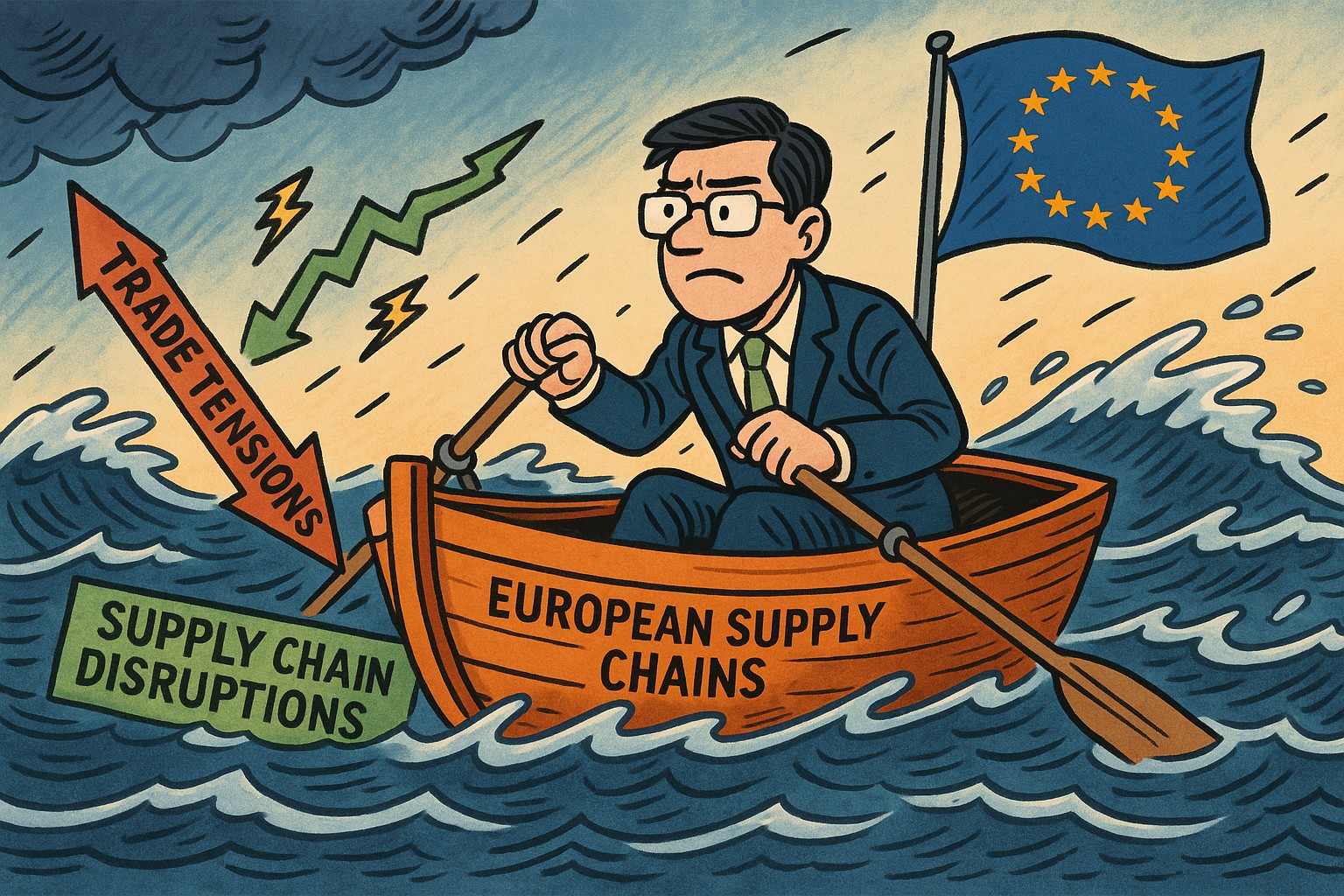
Brussels, June 27, 2025 – Faced with rising global trade tensions and escalating geopolitical uncertainty, European Union businesses are scrambling to adapt their supply chains, according to a new report from the European Investment Bank (EIB) released today.
The report, “Shock Waves from Turbulent Times: How EU Businesses Recalibrate Supply Chains,” reveals that EU companies are overhauling sourcing strategies in response to the latest surge in protectionism, including new US tariffs, continued tensions with China, and persistent disruptions in global logistics.
Supply Chain Stress Still High Despite Easing Tensions
While trade tensions eased slightly in 2024, the study finds that the damage to supply chain confidence remains. More than half of EU firms that import goods continue to invest heavily in resilience strategies, including diversifying suppliers, building inventories, and adopting digital tools to track shipments.
“Firms are not just reacting to the current crisis. They’re preparing for a future where supply shocks are more frequent and harder to predict,” said Debora Revoltella, Director of Economics at the EIB.
China Dependency Remains a Major Risk
China remains the EU’s largest import partner, accounting for 28% of extra-EU imports. However, that reliance comes with risks. Firms dependent on Chinese suppliers report higher rates of supply chain disruptions, particularly for semiconductors and critical raw materials.
Alarmingly, 36% of companies that source essential inputs from China classify those supplies as being at “high risk of disruption,” compared to just 6% for those sourcing within the EU.
Turning to the EU Single Market — But Limits Remain
The EU single market has emerged as a critical safety net. Over 60% of the bloc’s trade is now within the EU itself, offering some protection against global shocks.
However, the report warns that regulatory fragmentation within the EU remains a significant barrier. Compliance costs between member states are equivalent to an average tariff of 40% for goods and a staggering 110% for services.
Green and Digital Transition Drives Supply Chain Shifts
Sustainability and digitalisation are now key factors in supply chain decisions. About 49% of companies monitor emissions not just from their own operations but also across their entire supply chain. Larger firms are leading the way, with nearly half already implementing carbon-reduction initiatives.
Still, the road to decarbonised supply chains is bumpy. Firms cite high costs, lack of reliable supplier emissions data, and inconsistent regulations as major hurdles.
Financial Support Makes the Difference
The report highlights that firms receiving government grants or preferential loans are significantly more likely to invest in digital tracking, diversify suppliers, and improve resilience. In contrast, companies facing high energy costs, labor shortages, or regulatory uncertainty are slower to adapt.
Price Pressures Mount
Cost increases are cascading through the supply chain. More than 36% of firms expect to raise prices further in 2025, with wage and energy inflation compounding supply costs. Notably, companies sourcing from China reported lower input cost increases, highlighting the tension between cost efficiency and geopolitical risk.
EIB Calls for Urgent Policy Action
The EIB urges EU policymakers to double down on completing the single market, accelerating trade deals with key partners like Mercosur and India, and boosting financial support for firms investing in digital and green supply chain solutions.
“The message is clear,” the report concludes. “European businesses are not retreating from global trade — but they are recalibrating it. Success will depend on whether Europe can build supply chains that are both resilient and competitive in a fragmented world.”
Summary by DigitalTrade4.EU
